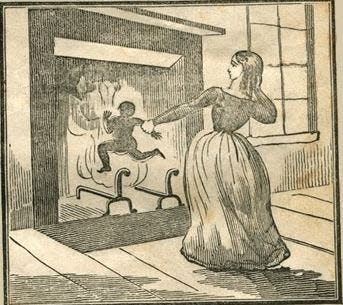The saga of Jesse Griffith, notorious, murdering member of Patty Cannon's gang
At 11 o’clock on Aug. 16, 1820, the condemned man was brought out of the Cambridge, Maryland, jail dressed in his burial shroud. Taking a seat on a cart, which was followed by several ministers, Jesse Griffith began the slow procession to the place of execution.
The Griffith brothers join Patty Cannon's gang of crooks
Jesse and his brother John were from a humble Sussex County family. Their father died when they were young, and their mother was said to be “indulgent to criminality.” Jesse’s only constant employment, if it could be called that, was when he and brother, John, joined Patty Cannon’s gang of crooks.
During the first quarter of the 19th century, Patty Cannon, who lived in southwest Sussex County, near the border with Maryland, was suspected of a litany of crimes including robbery, kidnapping and murder.

In 1813, a slave trader named Ridgell and his traveling companion stopped at Cannon’s house to talk business. Ridgell had money to buy one of Patty’s slaves, and they agreed to meet in Laurel to complete the transaction. With that, the slave trader and his companion boarded their carriage and started down the road to Laurel.
Donald Trump really hates wind energy: 'I hate wind': Trump doubles down on his opposition as wind energy advances on Delmarva
Patty Cannon and her gang ambush the slave trader
The moment the carriage left the Cannon house, Patty changed into men’s clothing. After her son-in-law, Harry Brereton, and the brothers, John and Jesse Griffith, brought horses from the stables, the four riders galloped off to intercept the slave traders and their cash.
Outside of Laurel, the Cannon gang ambushed the slave traders. Ridgell was mortally wounded, but he and his companion successfully reached Laurel, where they reported the attack by the Cannon gang.

When confronted by the Sussex County authorities, like many criminals, Jesse decided to shift the blame to others. He implicated his brother and Brereton in the killing of Ridgell. The two were promptly arrested, convicted and executed.
Jesse went free, and Patty Cannon was not charged. It was night when the ambush occurred, and she was dressed in men’s clothing. Ridgell and his companion may not have realized that she was part of the attack.
OC Bikefest gets 2 big live acts: Rock legends join OC Bikefest for big Ocean City live music double bill. All to know.
Jesse Griffith finally hangs for a crime he says he didn't commit
Jesse was shunned by the public for his criminal behavior, and an outcast among outlaws for betraying his own brother and Brereton. Griffith lived in shacks on the Nanticoke upstream from Vienna, sometimes in Maryland and sometimes in Delaware. He was blamed for robbing smokehouses, barns and other outbuildings; and from time to time, gangs of men would gather to drive him away and demolish his hut.
An argument between Jesse and a neighbor escalated into a fight, and a sheriff arrived with a posse to arrest Jesse. When the posse surrounded Griffith’s crude house to arrest him, shots were fired, and a man was killed. Griffith was arrested and charged with murder.
2 Shore lottery players win big: Two Salisbury players win big in lottery, plus latest on Powerball and Mega Millions
At his trial, Griffith pleaded not guilty, contending that another man had fired the fatal shot. This time, Jesse’s shifting the blame failed to work. He was found guilty and sentenced to be hanged.
On Aug. 16, 1820, Griffith stood on the gallows, and he was asked by the sheriff if he had any final words. After a short pause, he struggled to his feet and in a faint voice, Griffith declared, “As to the crime for which I am to die, God knows I am innocent of it,” and he warned young people against drunkenness and bad company. As the ministers sang a solemn hymn, the trap was sprung, and Jesse Griffith’s criminal career, and his penchant for blaming others, was over.
Principal sources
Easten Gazette and Eastern Shore Intelligencer, Aug. 19, 1820; July 23, 1821.
Hal Roth, The Monster’s Handsome Face, Nanticoke Books, Vienna, Maryland, 1998, pp. 16-17.
This article originally appeared on Salisbury Daily Times: Jesse Griffith's saga of murders and the notorious Patty Cannon gang
